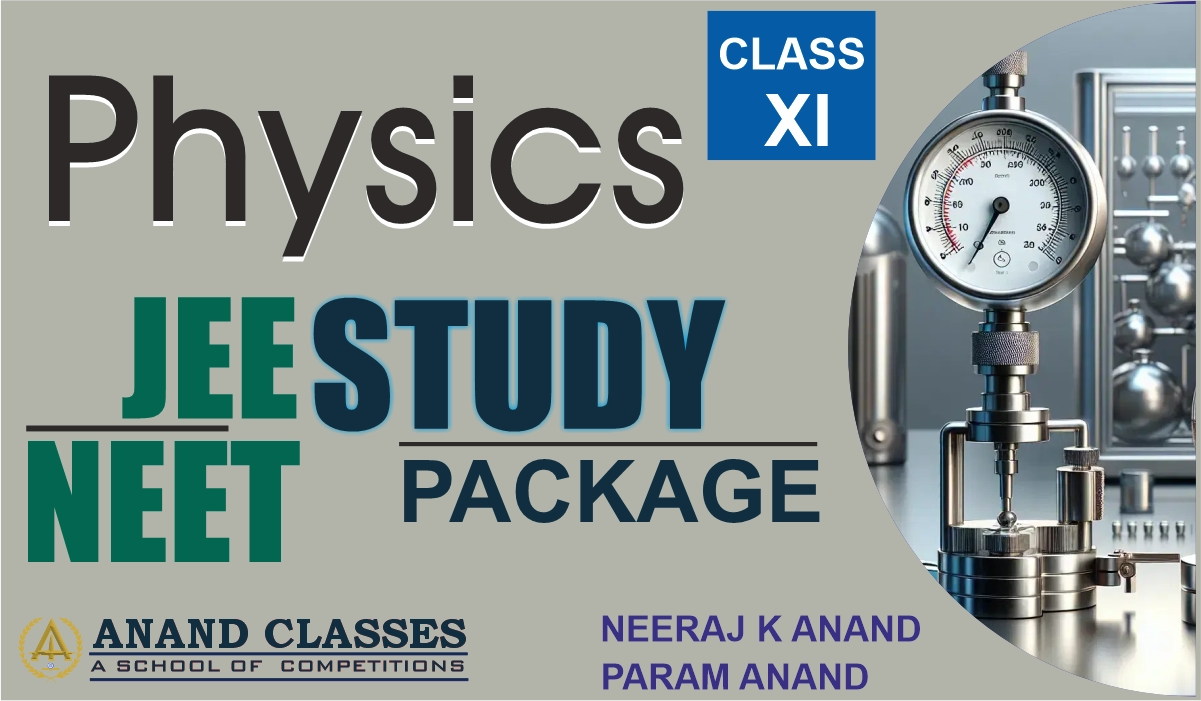Here are some Assertion and Reason (A-R) Questions on Units and Measurements for Class 11 Physics CBSE Board Exam, along with detailed explanations.
Assertion-Reason Type Questions on Units and Measurements
Each question consists of two statements:
Assertion (A): A statement of fact.
Reason (R): An explanation for the assertion.
You have to choose the correct answer from the following options:
- (A) Both Assertion and Reason are true, and Reason is the correct explanation of Assertion.
- (B) Both Assertion and Reason are true, but Reason is NOT the correct explanation of Assertion.
- (C) Assertion is true, but Reason is false.
- (D) Assertion is false, but Reason is true.
1. Question
Assertion (A): The SI unit of pressure is the pascal (Pa).
Reason (R): Pressure is defined as force per unit volume.
Answer: (C) Assertion is true, but Reason is false.
Explanation: The SI unit of pressure is pascal (Pa) = N/m², which is correct. However, pressure is defined as force per unit area (P = F/A), not force per unit volume.
📌 Related Posts:
Scalar And Vector Products Notes-Class 11 Physics
|
Difference Between Gravitation & Gravity | JEE,NEET & Class 11 | MCQs & Questions and Answers
|
Vectors – Types, Properties, Polygon, Parallelogram Law, Dot,Cross Product – IIT JEE Class 11 Physics Notes
|
Gravitation Question Paper Class 11 Physics CBSE Board Exam
|
Newton’s Laws of Motion – Three Laws of Motion Explanation, Examples
2. Question
Assertion (A): The dimensional formula of work and energy is the same.
Reason (R): Work and energy are scalar quantities.
Answer: (B) Both Assertion and Reason are true, but Reason is NOT the correct explanation of Assertion.
Explanation:
- Work and energy have the same dimensional formula: [ML²T⁻²].
- They are both scalar quantities.
- However, the fact that they are scalar does not explain why they have the same dimensions. The reason for the same dimensional formula is that work is a measure of energy transfer.
3. Question
Assertion (A): A physical quantity can have a unit but no dimensions.
Reason (R): Plane angle and solid angle are dimensionless quantities.
Answer: (A) Both Assertion and Reason are true, and Reason is the correct explanation of Assertion.
Explanation:
- A physical quantity like plane angle (radian) and solid angle (steradian) has a unit but no dimensions.
- Their dimensions are expressed as [M⁰L⁰T⁰], meaning they are dimensionless.
4. Question
Assertion (A): The value of a physical quantity remains the same regardless of the system of units used.
Reason (R): The numerical value of a physical quantity changes when the unit system changes.
Answer: (A) Both Assertion and Reason are true, and Reason is the correct explanation of Assertion.
Explanation:
- A physical quantity is independent of the system of units, meaning its actual value remains unchanged.
- However, when the unit changes, the numerical value adjusts accordingly (e.g., 1 m = 100 cm).
- This supports the assertion that while numerical values change, the actual physical quantity remains the same.
5. Question
Assertion (A): Significant figures depend on the least count of the measuring instrument.
Reason (R): Significant figures give an idea about the precision of measurement.
Answer: (A) Both Assertion and Reason are true, and Reason is the correct explanation of Assertion.
Explanation:
- The least count of an instrument determines the smallest measurement it can make, which affects the number of significant figures in a reading.
- More significant figures indicate greater precision in measurement.
6. Question
Assertion (A): The order of magnitude of 995 is 3.
Reason (R): The order of magnitude of a number is determined by rounding it to the nearest power of 10.
Answer: (A) Both Assertion and Reason are true, and Reason is the correct explanation of Assertion.
Explanation:
- The order of magnitude is found by expressing the number in powers of 10.
- Since 995 ≈ 10³, its order of magnitude is 3.
7. Question
Assertion (A): If a quantity has the same dimensions in two different systems of units, then its numerical value will also be the same.
Reason (R): A physical quantity remains unchanged regardless of the system of units.
Answer: (C) Assertion is true, but Reason is false.
Explanation:
- The dimensions of a quantity remain the same across unit systems.
- However, its numerical value can change when expressed in different units (e.g., 1 m = 100 cm).
8. Question
Assertion (A): The dimensional formula of velocity and speed is the same.
Reason (R): Velocity is a scalar quantity.
Answer: (C) Assertion is true, but Reason is false.
Explanation:
- Velocity and speed have the same dimensional formula: [LT⁻¹].
- However, velocity is a vector, not a scalar.
9. Question
Assertion (A): The dimensional formula of momentum and impulse is the same.
Reason (R): Impulse is defined as the rate of change of momentum.
Answer: (C) Assertion is true, but Reason is false.
Explanation:
- Momentum (p) = mass × velocity = [MLT⁻¹]
- Impulse (J) = force × time = [MLT⁻¹]
- Both have the same dimensional formula.
- However, impulse is change in momentum, not the rate of change (which is force).
10. Question
Assertion (A): The SI unit of solid angle is steradian (sr).
Reason (R): Solid angle is defined as the ratio of the area of a spherical surface to the square of its radius.
Answer: (A) Both Assertion and Reason are true, and Reason is the correct explanation of Assertion.
Explanation:
- Solid angle (Ω) = Area on sphere / (radius)²
- The SI unit steradian (sr) is dimensionless, as it is a ratio of two areas.
11. Question
Assertion (A): A dimensionally correct equation must be physically correct.
Reason (R): Two physical quantities having the same dimensions are always equal.
Answer: (D) Assertion is false, but Reason is true.
Explanation:
- A dimensionally correct equation may still be incorrect physically. Example: s=ut+1/3at2 has correct dimensions but is incorrect.
- Two quantities with the same dimensions are not necessarily equal (e.g., torque and work both have [ML²T⁻²] but are different physical concepts).
12. Question
Assertion (A): The dimensional formula of angular momentum is different from that of linear momentum.
Reason (R): Angular momentum is a scalar quantity, while linear momentum is a vector.
Answer: (C) Assertion is true, but Reason is false.
Explanation:
- Angular momentum (L) = r × p = [ML²T⁻¹]
- Linear momentum (p) = mv = [MLT⁻¹]
- Their dimensional formulas are different.
- Angular momentum is a vector, not a scalar.
13. Question
Assertion (A): The dimensional formula of gravitational constant (G) is [M⁻¹L³T⁻²].
Reason (R): The force between two masses is given by F = Gm1m2/r2.
Answer: (A) Both Assertion and Reason are true, and Reason is the correct explanation of Assertion.
Explanation:
Rearranging G = Fr2/m1m2,
we get: [G]=[MLT−2][L2]/[M][M]
[G] = [M−1L3T−2]
Thus, both statements are correct.
14. Question
Assertion (A): The SI unit of force is the Newton (N).
Reason (R): Force is defined as mass per unit acceleration.
Answer: (C) Assertion is true, but Reason is false.
Explanation:
- Force is defined as mass × acceleration (not mass per unit acceleration).
- SI unit of force Newton (N) = kg·m/s².
15. Question
Assertion (A): Physical quantities having the same dimensions always have the same SI unit.
Reason (R): Work and torque have the same dimensional formula.
Answer: (C) Assertion is false, but Reason is true.
Explanation:
- Work (W) = force × displacement → Joule (J)
- Torque (τ) = force × perpendicular distance → Newton-meter (N·m)
- Both have [ML²T⁻²] but different units, proving Assertion false.
16. Question
Assertion (A): The unit of power is the same in all systems of units.
Reason (R): Power is the rate of doing work.
Answer: (C) Assertion is false, but Reason is true.
Explanation:
- Power = work/time → Watt (W) = J/s (in SI).
- In CGS system, power is in erg/s.
- Thus, power has different units in different systems.
17. Question
Assertion (A): Percentage error decreases if the least count of the measuring instrument decreases.
Reason (R): A more precise instrument provides smaller errors.
Answer: (A) Both Assertion and Reason are true, and Reason is the correct explanation of Assertion.
Explanation:
- A smaller least count means more precise measurement.
- This reduces the absolute error, decreasing the percentage error.
18. Question
Assertion (A): The SI unit of acceleration is m/s².
Reason (R): Acceleration is defined as the rate of change of velocity.
Answer: (A) Both Assertion and Reason are true, and Reason is the correct explanation of Assertion.
Explanation:
- Acceleration a=dv/dt → SI unit = m/s².
- This confirms the assertion.
19. Question
Assertion (A): If a quantity has zero dimensional formula, then it is always a constant.
Reason (R): The sine of an angle is dimensionless.
Answer: (D) Assertion is false, but Reason is true.
Explanation:
- A zero-dimensional quantity can still be a variable (e.g., refractive index has no dimensions but varies).
- Sine of an angle is indeed dimensionless, but that doesn’t justify the assertion.
20. Question
Assertion (A): The time period of a simple pendulum is dimensionally dependent on acceleration due to gravity and length of the string.
Reason (R): The time period of a simple pendulum is given by T =2π√(L/g).
Answer: (A) Both Assertion and Reason are true, and Reason is the correct explanation of Assertion.
Explanation:
- The time period T depends on L and g, with the formula: T =2π√(L/g)
- The dimensions confirm dependency: T =√(L/LT-2)=√T2=T
- Thus, both are correct.
Buy Complete Study Material at https://publishers.anandclasses.co.in/
Proprietor: NIRMAL ANAND Educations
Written by: Neeraj Anand
Published by: Anand Technical Publishers under Anand Classes
Contact: +91-9463138669
Email: anandclasses1996@gmail.com



